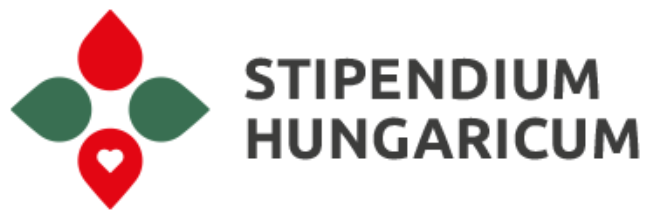1. Introduction of the Chinese Food Market
Agriculture and food security are traditionally important topics for the Chinese government, whose importance only gained traction due to the recent changes in the global environment. The so-called No1. document issued by the State Council and the Communist Party of China has been for decades the most important document related to the three rural questions, serving as political guidance for the tasks ahead.
China’s most important and most complex task is to produce food to feed 20% of the world’s population from 12% of the world’s arable land. The geographical location of these lands is also problematic: 70% of the arable land is located on the North part, where the water resources are scarce here, but widely available on the Southern part of China, which is not suitable for large-scale agriculture. In the previous years the Chinese government established and operated a far-reaching rural development support system, which not only supports farming and food production, but also provides sufficient income for the farmers.
The Ministry of Agriculture and Rural Affairs has issued the Agricultural Strategy of China, which clearly specifies the products which should be fully produced within the country and the ones in which there is place for the imported products. Generally the basic foodstuff (grain, poultry, pork, egg and vegetables) are the ones which should achieve self-sufficiency, with the self-sufficiency rate of over 90%. Rice, soybean, sugar, beef and dairy products are considered to consume too much water or feed, therefore the import proportion of these products shall be expanded. The accelerating urbanization process and the gradually changing eating habits are leading to higher consumption of meat and dairy products, while consumption of rice and vegetables is declining. The import of meat and dairy products will continuously grow. China is the globe’s biggest importer of food and agricultural products, and given current processes – even in the optimal scenarios regarding its food self-sufficiency aims – it will remain so for the coming years. Despite the end of its population growth, given the increase of its middle class, China’s import of agricultural products in 2022 still increased to 236.06 billion USD, with a year-on-year increase of 7.4% [A1].
Due to the big size of the country and the huge income-gap between the Eastern and Western parts, it is impossible to draw a unified picture: in the big Eastern cities (like Beijing, Tianjin, Qingdao, Shanghai and Shenzhen), there is already a big population eating western style food with high monthly income, while in the Western part of the country, these products are not known, the taste is still very local.
Currently China faces new challenges: the productivity is not high, the local production is expensive. Due to the small-sized farms, the mechanization is low and the low education level of the farmers also prevents its development.
Hungary and China have been actively working together on several areas: the coordination mechanism of science and technology cooperation has been established, the technology transfer is supported by the joint transfer center and the companies also play a significant role in the trade of the agricultural products.
2. Market access of foodstuff and other agricultural products
The import of foodstuff of plant and animal origin in general is regulated by the General Administration of Customs of the People’s Republic of China. Some product categories (eg. pet food, sowing seeds, etc.) exporting to China also requires additional permits necessary for the domestic registration of the product – these permits are also required in advance of the GACC permit.
From 1 January 2022 GACC Decree 248 introduced a new electronic registration system for most food products, categorizing these products in two main categories based on the food safety risk they might pose.
Low risk products can be self-registered by the exporting/importing enterprises on the CIFER system of the GACC:
Products that can be exported to China by self-registration, with no additional need for permits issued by Hungarian authorities:
- Vegetables and their products (except fresh and dehydrated vegetables)
- Processed grain and their products
- Tea
- Processed nuts and seed products
- Liquor
- Beverages and frozen drinks
- Biscuits, pastries, bread
- Sugar (including raw sugar, table sugar, lactose, syrup, etc.)
- Candy, chocolate (including chocolate, cocoa butter substitute chocolate and its products)
- Condiments (excluding sugar)
- Roasted coffee beans, cocoa beans and their products (excluding chocolate)
- Fruit products (excluding dried fruits)
- Other processed food
Products that are perceived by GACC as posing medium to high food safety risk can be only exported after the respective national authority (NÉBIH) has recommended the establishement in the CIFER system, therefore these categories require application at NÉBIH/the local government office. In case Hungary has the market access for the product category based on previous agreements between Hungarian and Chinese authorities, the product can be exported after succesfull registration (and possibly auditing the establishement). In case Hungary does not have market access, the Hungarian authority initiates the processes required.
- Bee products
- Egg and egg products
- Edible oils and fats
- Oilseeds
- Stuffed wheaten products
- Edible grains
- Milled grain industry products and malt
- Fresh and dehydrated vegetables and dried beans
- Plant spices
- Nuts and seeds
- Frozen fruits
- Dried fruits
- Unroasted coffee beans and cocoa beans
- Meat and its products
- Aquatic products
- Dairy products
- Bird nest and its products
- Health food and food for special dietary needs
Agricultural products for non-human consumption with Hungarian market access:
- Day-old hatchlings of duck and geese*
- Hatching eggs of duck and geese*
- Horses
- Pet food
Currently all poultry products that are not heat treated (including the processed meat and liver products) are banned from the Chinese market due to the Highly Pathogenic Avian Influenza outbreak. Thus none of these products can be exported to China until the ban is lifted by the Chinese Authorities.
Currently all pork products are banned from the Chinese market due to the African Swine Fever outbreaks registered in Hungarian wild boar population. Thus none of these products can be exported to China until the ban is lifted by the Chinese Authorities.





